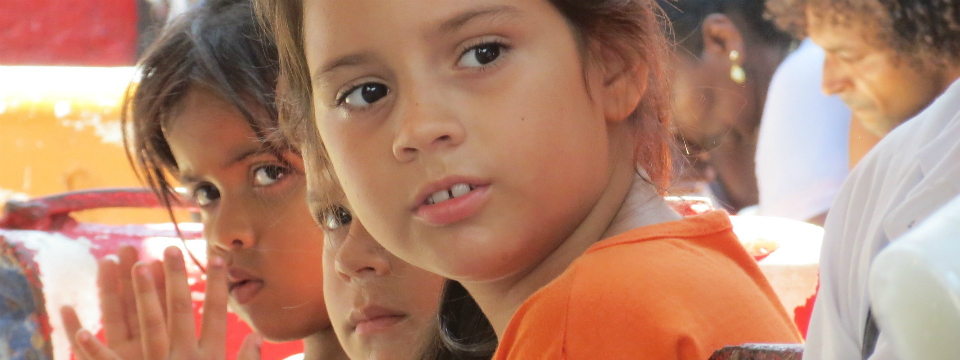New research examines long-term benefits of intensive mentoring for at-risk youth
 Eddy, J. M., Martinez, C. R., Grossman, J. B., Cearley, J. J., Herrera, D., Wheeler, A. C., … & Harachi, T. W. (2017). A Randomized Controlled Trial of a Long-Term Professional Mentoring Program for Children at Risk: Outcomes Across the First 5 Years. Prevention Science, 1-12.
Eddy, J. M., Martinez, C. R., Grossman, J. B., Cearley, J. J., Herrera, D., Wheeler, A. C., … & Harachi, T. W. (2017). A Randomized Controlled Trial of a Long-Term Professional Mentoring Program for Children at Risk: Outcomes Across the First 5 Years. Prevention Science, 1-12.
Summarized by Rachel Rubin
Background: Although parents and other close relatives are usually the main sources of support for children, sometimes youth need additional supports. In these cases, nonfamilial adults play an essential role in children’s positive development. Research has found that children from disadvantaged backgrounds who end up thriving in adulthood often cite these caring nonfamilial adults or, “natural mentors,” as a main source of support. While natural mentors are an important source of support for these children, not all children have access to caring nonfamilial adults with whom they can form close connections. In these cases, programs that connect these youth with caring, and trained, adults are likely to be beneficial.
Youth mentoring is a popular intervention in the United States for children from disadvantaged backgrounds. Research has shown that mentoring has positive impacts for children. In addition, children determined to be “at risk” have been found to benefit more from mentoring programs than children from less disadvantaged backgrounds. Most of this research has focused on volunteer mentors as opposed to adults who hold paid mentoring positions. In the minimal research that exists, no differences have been found in outcomes between youth working with paid versus volunteer mentors. Further, although no one program factor has been found to relate to better outcomes, programs that are more organized, have ongoing mentor training, provide structured activities for mentoring dyads, include families, and monitor program implementation tend to have stronger positive youth outcomes. The Friends of the Children (FOTC) program contains these factors and in addition, pays adults to work full time as mentors for the youth in the program. These mentors identify children who are at risk of developing behavior problems later in childhood and adolescence. Children begin being mentored after kindergarten and are provided mentoring by the program through high school.
FOTC hypothesizes that the ongoing relationship and close connection between the mentor and the child is the key element that leads to positive outcomes through adulthood. That is, the mentoring relationship provides children with social support, opportunities to practice emotional regulation, access to academic help, and other opportunities that the child may not have access to otherwise. These opportunities lead to gains in the child’s social-emotional development, cognitive development, and identity development that then lead to improvements in other social relationships in the children’s lives. This study is the first randomized control trial to examine differences in a mentoring program that includes all of these factors (e.g., paid full time mentors). The researchers had two hypotheses: 1) Children randomly assigned to the FOTC intervention condition will show less growth in problem behavior compared to children assigned to the control condition, and 2) Children randomly assigned to the FOTC intervention condition will show more growth in strengths, compared to children assigned to the control group.
Method: Children were identified through existing relationships that FOTC had with public elementary schools in each site (i.e., Boston, New York City, Portland, Oregon, Seattle). Multi-method screenings of risk and protective factors of all children (in kindergarten in 3 sites and 1st grade in one site) were completed by mentors and school personnel. Scores from these screenings were used to create a “net risk” score for future problems. At the end of a two-stage screening process, children who were deemed eligible for the program and the study (by scoring in the top half of children), were randomly assigned to either the Intervention or Control condition.
Sample: The sample consisted of 281 children and one of their caregivers. The average child was 6.5 years old, 53% of children were female, and the majority of children were of a racial and/or ethnic minority (46% African American, 18% Latino; 18% multiracial, and 14% White). Among the caregivers, 91% identified as female, 42% did not graduate from high school, 30% reported having been arrested, 40% were unemployed, and 13% reported being diagnosed with mental health conditions. 92% of the children received free or reduced price lunch at school.
Intervention Condition: Children were enrolled in FOTC and assigned to a same-sex mentor. The average age of mentors was 29, less than half of mentors identified as White, and 69% had an undergraduate degree. Mentors completed a weeklong intensive training program before being matched with their first child. Systems were put in place for monitoring, supporting, and supervising mentors work (e.g., supervision meetings) and mentors participated in ongoing continuing education. The FOTC program has three long-term goals for children: school success, positive youth development, and pursuing a healthy and prosocial lifestyle. Developmental milestones are set in several areas (i.e., social-emotional development, school success, healthy habits, making good choices, skills for the future) in order for children to progress toward these goals. Activities in the program focus on the mentor-child relationship, with mentors being required to meet with each child they mentor for 4 hours each week. In addition, mentors stay in contact with caregivers and teachers.
Control Condition: Children are not assigned a FOTC mentor. Instead, caregivers were offered an updated list of programs (aside from FOTC) in the local community to assist children as well as offered help in contacting referrals.
Measures: Caregivers were asked interview questions as well as questions from two widely used measures including the Child Behavior Checklist (which focuses on psychopathology) and the Behavioral and Emotional Rating Scale (which focuses on child strengths). Children were asked questions about their own behavior as well as the behavior of their friends on a yearly basis. Mentors were asked questions about how much contact they had with children and in what activities they were engaging with youth.
Results: 144 of the 146 children in the Intervention condition met with a mentor. It took an average of 62 days after a caregiver consented to participation in the study for the first meeting to occur between mentor and child. The majority of children had only one mentor (54%). However, 21% of children had two mentors, 10% had three, and 15% had four or more mentors during the time period of the study. On average, children had a mentor for approximately 4.4 years. Mentors reported that they spend 40% of their time in activities focused on social and emotional development, 26% on school success, 14% on healthy habits, 11% on making good choices, and 9% on future skills. A small number of children in the control condition were reported as having some type of mentor.
In regard to the study hypotheses, results showed that compared to children in the control group, children in the Intervention group showed significantly less growth in Youth Trouble in School (per caregiver report). In addition, children in the Intervention condition showed greater growth in Youth Positive Behavior in School (again, according to parents).
Discussion: In the 5-year period of the study, children randomly assigned to the intervention condition (participating in FOTC) were rated by caregivers as growing at a significantly greater degree on one strength measure and significantly slower rate on one problem measure. These same differences were not found among the child-rated measures. Based on effect sizes (i.e., d = 0.02 to 0.41, average 0.20), the impacts of the FOTC program are currently similar to those of other mentoring studies (which mostly consist of volunteer mentors). However, there are several factors of the FOTC program that differ from most mentoring programs, making it likely that youth development impacts would be greater than in typical mentoring programs. For example, FOTC pays mentors to work full time, mentors receive extensive training, the majority of mentors were of racial and/or ethnic minority identity, and over 90% of children in the program actually met with their mentor. Because FOTC is a relationship-based program, it is possible that the full impacts of the program will not be evident until children reach adolescence—a time at which most children are forced to make decisions and form relationships that are essential to their long-term success. In addition, as the study had a relatively small sample size and not all constructs were measured (e.g., ability to form health social relationships), the findings may not have captured the full effects of the program.
Although about half way through the FOTC program (i.e., 5 years) the effects seems to be similar to findings in volunteer mentoring programs, promising results were still obtained. Caregiver perceptions of their children grew, which is a powerful effect. That is, positive caregiver perceptions may serve as a protective factor leading to increased success for these children, along with the positive connections children form with their mentors. Future research should continue to study the long-term effects of participation in mentoring programs with paid full time mentors in order to capture the potential additional effects of these programs.
To access the original article, click here.









